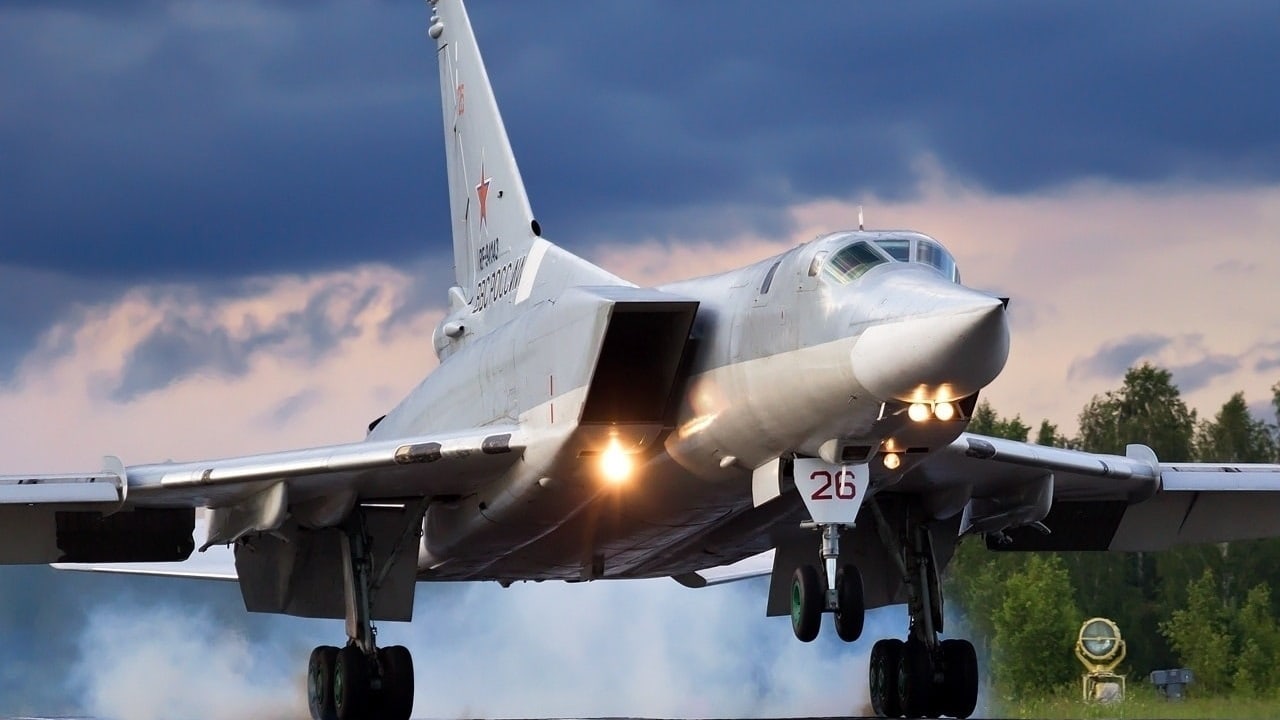Following a Ukrainian drone strike on the Russian Engels airbase in December, the Kremlin deployed a number of its long-range strategic bombers to more “remote” bases.

Russian Air Force Tu-22M3M. Image Credit: Creative Commons.
Secretary of the National Security and Defense Council Oleksiy Danilov said that Moscow had moved its Tu-95MS and Tu-22M3 bombers to Primorsky Krai, 6,000 kilometers (3,728 miles) away from the border with Ukraine, The Defense Post reported in January.
This week, eight of the Tu-22M3 bombers took part in patrol operations over the Pacific waters including the Sea of Okhotsk and the northern part of the Sea of Japan.
“As part of the sudden combat readiness inspection of the Pacific Fleet, a part of the Airborne Forces and logistic support units, eight Tu-22M3 long-range bombers conducted a combat training flight in the airspace over the neutral waters of the Sea of Okhotsk and the northern part of the Sea of Japan. During the inspection, the crews of the Tu-22M3 long-range bombers provided air support for the Pacific Fleet’s forces,” the Russian Ministry of Defense said in a statement to state-media outlet Tass on Wednesday.
The deployment of the bombers came just days after the Russian Pacific Fleet’s forces went on heightened alert on April 14 in a surprise combat readiness check. The snap inspection involved more than 25,000 personnel, 167 combat ships and support vessels, including 12 submarines, and 89 aircraft and helicopters, according to a report shared by Russian Defense Minister Sergey Shoigu.
Russia’s Backfire
The Tupolev Tu-22M3 long-range bomber (NATO reporting name “Backfire”) is a modernized version of the Cold War long-range supersonic, variable-sweep wing bomber that was designed to strike ground and sea targets with supersonic missiles and bombs. The bomber has an operating range of 7,000 km (4,350 miles) and is capable of carrying nuclear weapons.
The Tu-22M3 model was developed in the early 1980s and officially entered service in 1989. The Tu-22 is in some ways analogous to the United States Air Force’s B-1 Lancer.
However, whereas the B-1 has greater range and is a true intercontinental bomber, the Backfire is faster, yet, it is essentially a “theater” bomber in that it was designed to strike continental Europe and possibly some targets in the Atlantic. It also has far less bomb load capacity.
Its capabilities shouldn’t be dismissed. The Federation of American Scientists reported, “Its low-level penetration features make it a much more survivable system than its predecessors.”
In Soviet and Russian Service
The bomber saw limited use at the end of the Soviet-Afghan War, and Russia currently maintains a force of more than one hundred Tu-22M bombers in all configurations.
As previously reported, the Backfire also was used in some 00 operational sorties against rebels in Chechnya in the mid-1990s and against Georgian forces in the 2008 South Ossetian War. One was actually lost in combat, shot down by a Georgian missile in the latter conflict.
Backfires have further participated alongside Tu-95 Bears and Tu-160 Blackjacks to launch cruise missile strikes against Islamic State targets in Syria. It was also just over a year ago – on April 14, 2022 – that Tu-22M3s were employed in the ongoing conflict in Ukraine for the first time, where the bombers dropped “dumb bombs” as part of the Kremlin’s campaign in the then-besieged city of Mariupol.
More recently, the Tu-22M3 has been used to strike Ukrainian urban centers with the Kh-22 (AS-4 “Kitchen”) missiles. Ukraine, of course, hit back and targeted Russian bomber bases with Cold War-era reconnaissance drones, which then forced Moscow to move the bombers far out of the range of Kyiv’s drones.
MORE: ‘Breathing Fire’: Donald Trump Goes Crazy On Fox News Interview
MORE: Video – Ukraine Has Massive New NATO ‘Cannon’ Ready To Fight Russia
Author Experience and Expertise: A Senior Editor for 19FortyFive, Peter Suciu is a Michigan-based writer. He has contributed to more than four dozen magazines, newspapers, and websites with over 3,200 published pieces over a twenty-year career in journalism. He regularly writes about military hardware, firearms history, cybersecurity, politics, and international affairs. Peter is also a Contributing Writer for Forbes and Clearance Jobs. You can follow him on Twitter: @PeterSuciu.

